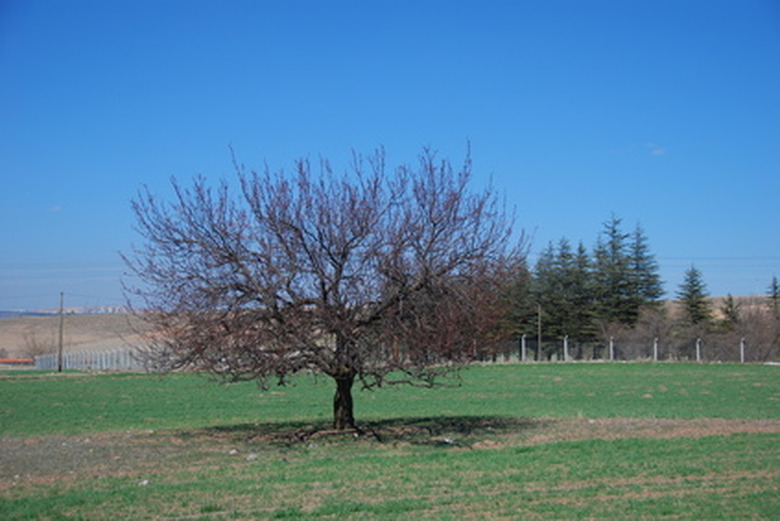The Advantages Of Plant Grafting
Plant grafting is a propagation technique by which a scion or whip (thin branch or shoot) of one plant is attached to the root stock, and often trunk or main stem, of another plant. Usually the receiving plant is notched or split at the graft site, and the plant being grafted is inserted into that cut; the join is then wrapped with tape or coated with wax or asphalt grafting compound to hold it in place until the two grow together. Fruit trees, heirloom vegetables, and ornamental trees and shrubs may all be grafted.
Propagation True-to-Type
Most fruit trees do not reproduce true-to-type from seed. Apple and pear trees of a particular variety can only be reproduced by grafting branches of the desired variety to another tree stock, according to the University of Minnesota Extension Service. The fruit of these grafted trees will be identical to the fruit of the original trees. Fruit tree grafting also allows orchardists to control the size of the trees they are growing by their selection of dwarf or full-size root and trunk stock. Ornamental novelty trees can also be created for the home landscape by grafting several fruit varieties onto one trunk stock.
- Plant grafting is a propagation technique by which a scion or whip (thin branch or shoot) of one plant is attached to the root stock, and often trunk or main stem, of another plant.
- Fruit tree grafting also allows orchardists to control the size of the trees they are growing by their selection of dwarf or full-size root and trunk stock.
Disease Resistance
One key advantage of grafting for gardeners and market farmers is the ability to grow delicious heirloom varieties, which lack modern disease resistance, on disease-resistant stock. The North Carolina State University Extension has developed a workshop on the Benefits of Grafting for Heirloom Tomatoes. The North Carolina Extension found through a series of field tests that heirloom tomato varieties grafted onto tomato root and main stem stock of modern disease-resistant varieties provided an effective management tool for growing heirlooms where locally existing diseases would otherwise preclude or greatly diminish the crop yield. Grafting to sturdy root and main stem stock also improved the yields of the heirloom tomato varieties where there was not disease pressure, which makes growing unique and interesting tomatoes–even by organic methods–considerably more economically productive for small market growers, and allows home gardeners a wider choice of tomato selections.
Aesthetics
Cornell University's Horticulture Department includes aesthetics and propagation of landscaping ornamental trees and shrubs among the many reasons for grafting and budding discussed in their advanced horticultural courses. Many shade trees, like the Norway maple, and landscaping shrubs that were bred for particularly unusual growth habits, like dwarf pines, are difficult to root and very slow to propagate by seed, and so are usually grafted by nursery operators for clonal reproduction. Grafting can be used as an art form in itself, to create lovely and unusual specimens such as by grafting shrub roses onto an upright tree stock to create a tree standard rose form. Tree peonies and weeping miniature cherry trees for the landscape are also created by grafting bush-habit stock onto an upright standard.
- One key advantage of grafting for gardeners and market farmers is the ability to grow delicious heirloom varieties, which lack modern disease resistance, on disease-resistant stock.
